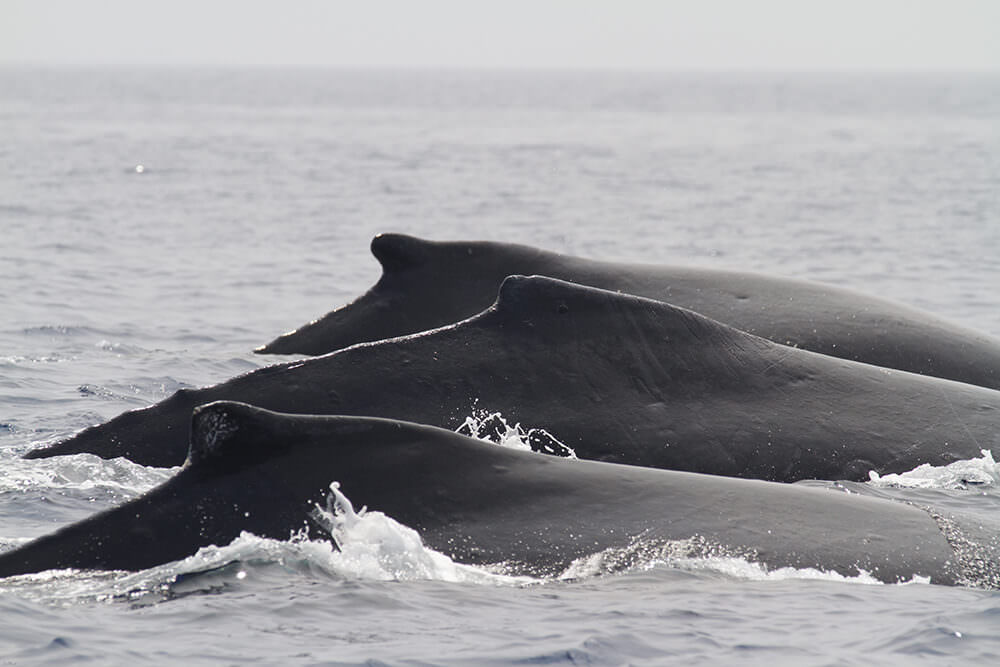Assessing Trends in Hawai‘i Humpback Whale Population

In late 2015, ocean users and scientists in Hawai‘i began reporting reduced numbers of whale sightings, and these observations continued into 2018. This trend raised concerns about the status of the Hawai‘i distinct population segment of humpback whales, which is now considered "recovered" and was removed from the U.S. endangered species list in 2016.
Since this trend in humpback whale numbers was first reported, Hawaiian Islands Humpback Whale National Marine Sanctuary has played a leading role in evaluating these observations and their significance on the population. Through a combination of acoustic monitoring, vessel- and shore-based surveys, and citizen science efforts, the sanctuary is collecting data on whale presence in Hawai‘i and tracking trends in whale occurrence.
In addition, the sanctuary plays a key role in coordinating communication among researchers, resource managers, and other stakeholders about trends in the whale population. In November of 2018, the sanctuary and NOAA's Pacific Islands Regional Office collaborated to organize a two-day workshop of whale experts to discuss the reduced presence of whales in Hawai‘i.
The workshop convened key scientists and managers involved in studies examining humpback whale abundance, distribution, and health in both Hawai‘i and Alaska. The objectives of the meeting were to present data on reported changes in humpback whale presence in Hawai‘i and Alaska, evaluate the validity and significance of these reports, consider potential explanations for the observed trends, identify knowledge gaps, and establish research priorities for filling those gaps. The workshop included presentations from various research groups and discussion/brainstorming sessions to address the stated objectives, and culminated in a final report.
Since the meeting, the sanctuary has continued to coordinate communication among participants via periodic teleconference updates from field efforts and by creating working groups to address specific priority issues.

